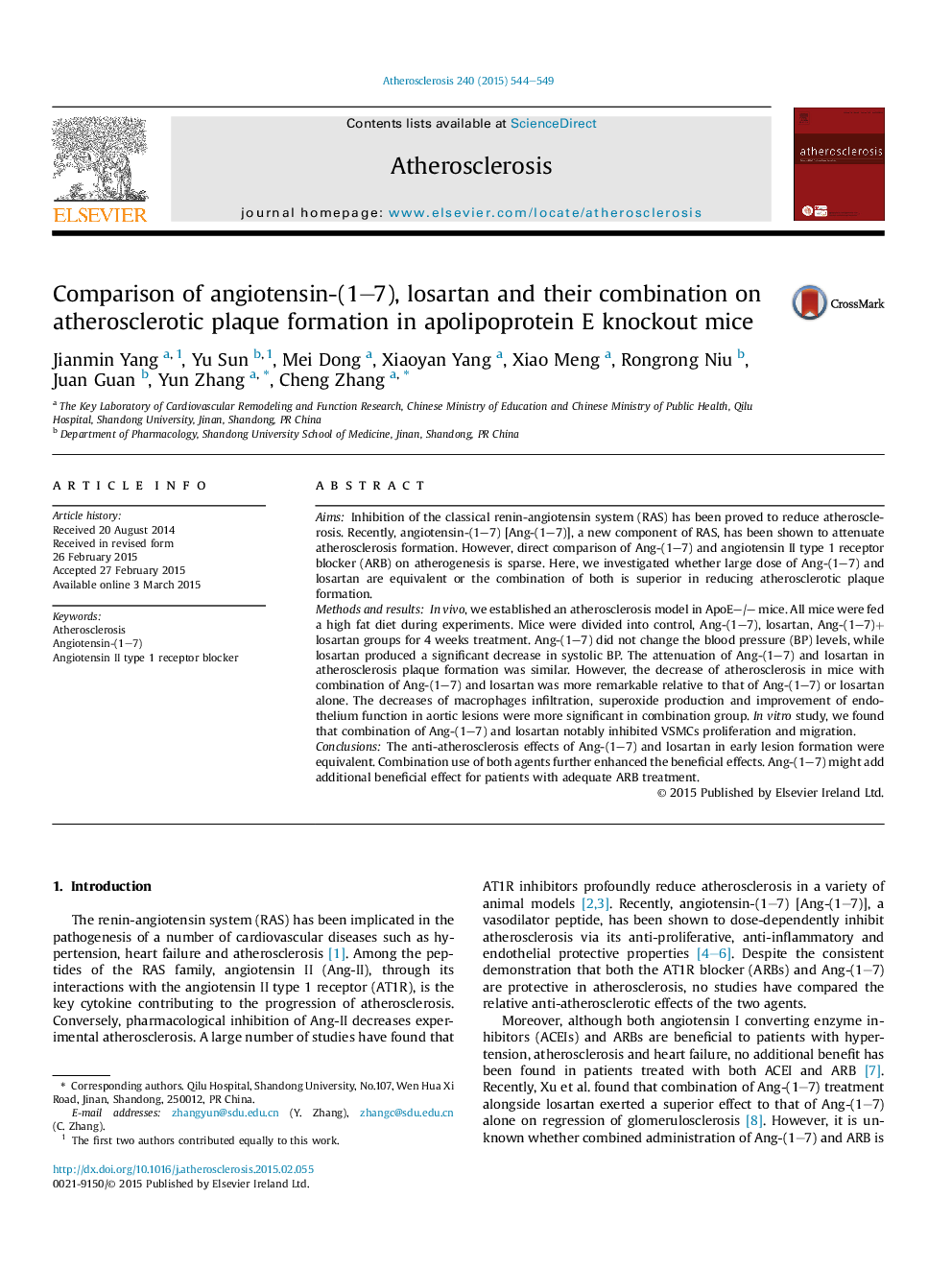| Article ID | Journal | Published Year | Pages | File Type |
|---|---|---|---|---|
| 5943910 | Atherosclerosis | 2015 | 6 Pages |
â¢We first compare the effect of ARB and Ang-(1-7) and the combinatory effect on atherosclerosis.â¢The effects of Ang-(1-7) and losartan on early atherosclerotic plaque formation were equivalent.â¢Combined Ang-(1-7) and losartan was more effective in attenuating atherosclerosis than Ang-(1-7) or losartan alone.
AimsInhibition of the classical renin-angiotensin system (RAS) has been proved to reduce atherosclerosis. Recently, angiotensin-(1-7) [Ang-(1-7)], a new component of RAS, has been shown to attenuate atherosclerosis formation. However, direct comparison of Ang-(1-7) and angiotensin II type 1 receptor blocker (ARB) on atherogenesis is sparse. Here, we investigated whether large dose of Ang-(1-7) and losartan are equivalent or the combination of both is superior in reducing atherosclerotic plaque formation.Methods and resultsIn vivo, we established an atherosclerosis model in ApoE-/- mice. All mice were fed a high fat diet during experiments. Mice were divided into control, Ang-(1-7), losartan, Ang-(1-7)+losartan groups for 4 weeks treatment. Ang-(1-7) did not change the blood pressure (BP) levels, while losartan produced a significant decrease in systolic BP. The attenuation of Ang-(1-7) and losartan in atherosclerosis plaque formation was similar. However, the decrease of atherosclerosis in mice with combination of Ang-(1-7) and losartan was more remarkable relative to that of Ang-(1-7) or losartan alone. The decreases of macrophages infiltration, superoxide production and improvement of endothelium function in aortic lesions were more significant in combination group. In vitro study, we found that combination of Ang-(1-7) and losartan notably inhibited VSMCs proliferation and migration.ConclusionsThe anti-atherosclerosis effects of Ang-(1-7) and losartan in early lesion formation were equivalent. Combination use of both agents further enhanced the beneficial effects. Ang-(1-7) might add additional beneficial effect for patients with adequate ARB treatment.
